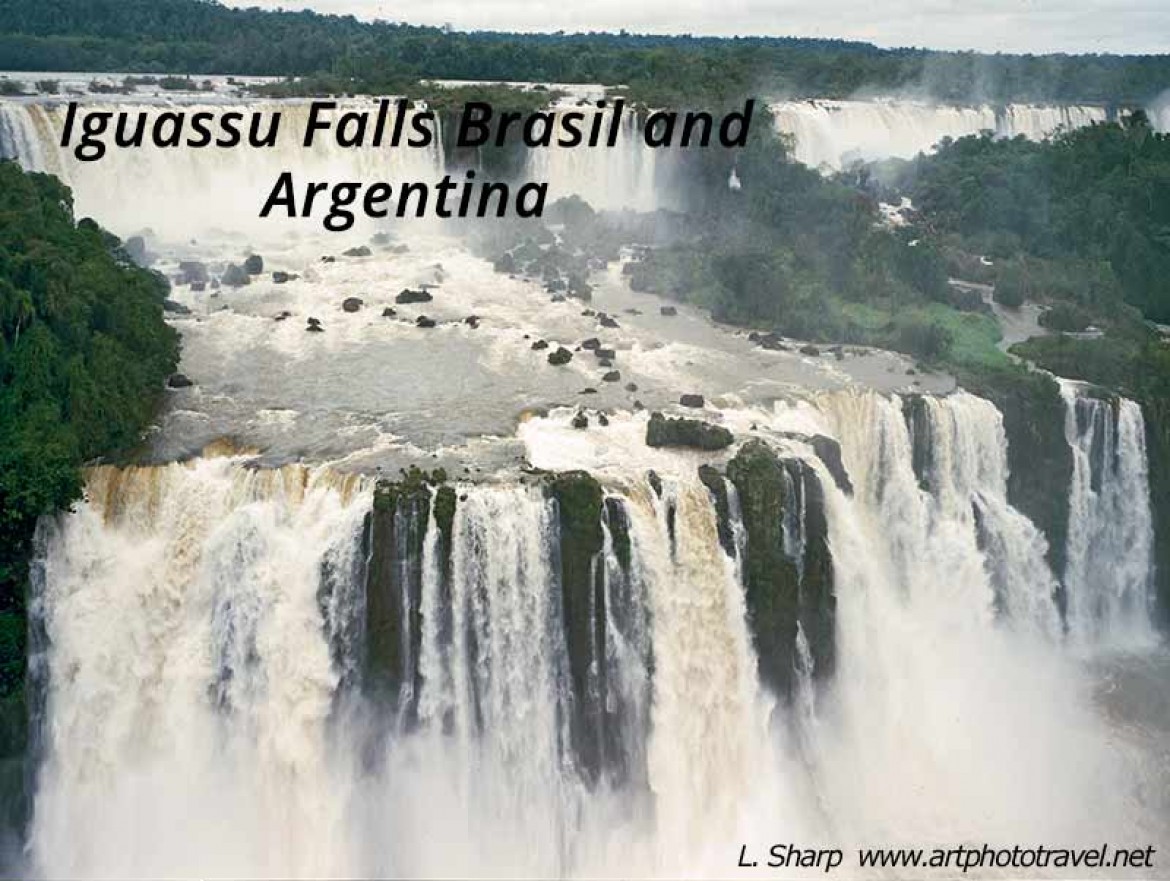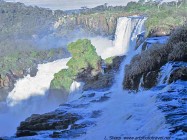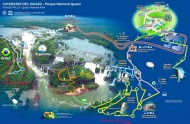The Iguassu Falls of Brazil, aka Iguaza Falls of Argentina
The Iguassu cataracts are the most extensive and by far the most impressive of the three largest waterfalls, that include the Niagara Falls of the USA and Canada, the Victoria Falls of Zambia and Zimbabwe. Situated at the junction of Argentina, Brazil and Paraguay, the most common way the reach the falls is by plane from Buenos Aires to the Iguassu airport on the Argentinian side. There are two major sections to the falls ( see Iguassu map Fig1). The Iguassu Falls fig1, on the Brazilian side and the Iguazu Falls fig2, on the Argentinian side (each country spells it differently). Each side provides a different aspect and feeling. Those on the Brazilian side provide a panoramic view of the cataracts and allow close approach to the awesome power of the Devil’s Throat. The Argentinian side allows individuals to get very close and personal to many of the individual water falls through a series of board walks.
Here the path meanders through a forest heavy with mists, and where the roar of the falls can fill the air.The forest hosts numerous butterflies and birds including vultures and Toucans. There are alligators in the water and one is likely to encounter the world’s largest rodent the Capybara. Transport between the Brazilian and Argentinian sides is by car, taxi or bus and crosses an international border where the vehicle may be stopped by immigration officers to inspect visas. There are two major hotels within walking distance of the falls both inside their respective national parks. The Sheraton Iguazú Resort on the Argentinian side and the historic Hotel das Cataratas overlooking the cataracts on the Brazilian side, see fig4.
Some personal thoughts.
♦The water flow over the falls can change dramatically with the season with very little flow during the summer months of December through March. The winter months of June through August have the highest rainfall and provide the most dramatic flows over the cataracts. However there is a lot more cloud, but being subtropical there can also be periods of blue skies. I went during July for six days, experienced dramatic water flow over the falls and had both clear and overcast days.
♦Both sides can become very crowded from mid-morning till late afternoon when the many tourist buses fill the car parks, distracting from the overall “force of nature” experience. By staying in the two hotels located inside the national parks one can walk to the viewpoints at ones leisure and avoid the crush.
♦To allow for bad weather and time to find the best photographic vantage point I would stay some 6 days (at least two half days would be lost in arrival, departure and organization protocols).
♦If I were to return again, I would go in winter and spend the first 3 days at the Sheraton Iguazu on the Argentinian side and the following 3 days at the Hotel das Cataratas on the Brazilian side to be within walking distance of the vantage points. This still allows going to either side by road transport if necessary.
♦If I had very limited time and had to choose to visit only one side it would be the Brazilian falls.






